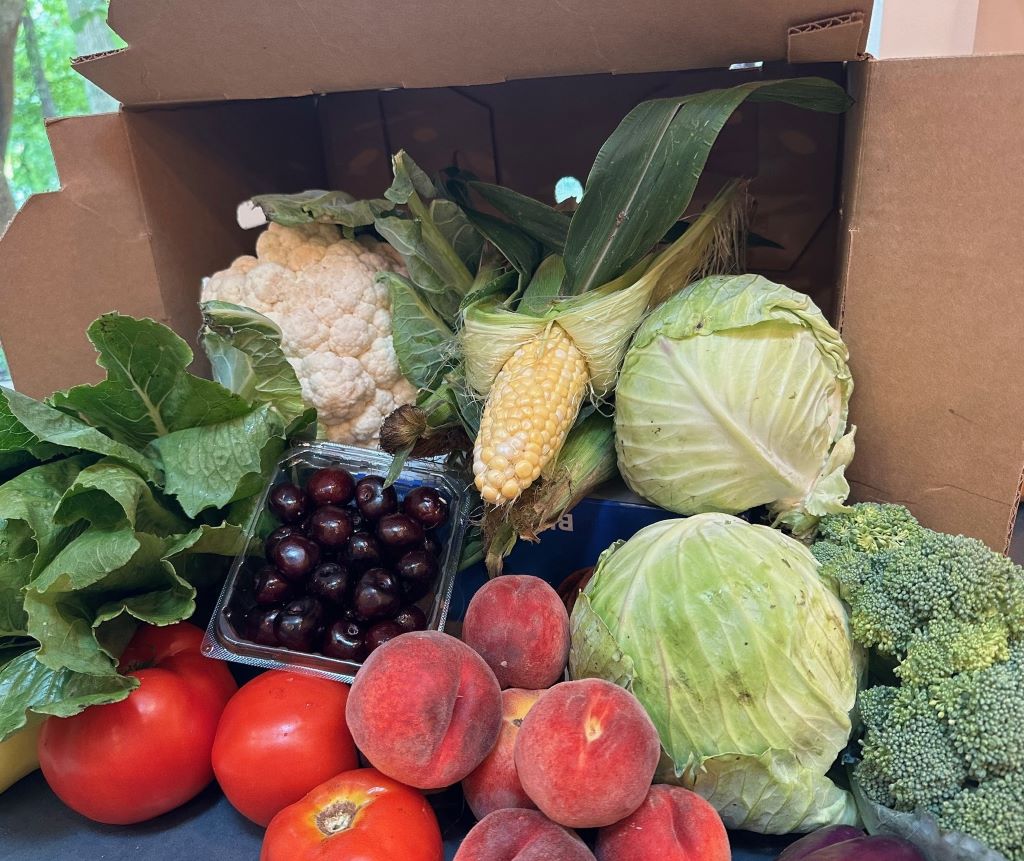What’s even better than farm-to-table dining? Having the farm come to you! Community Supported Agriculture (CSA) brings some of the freshest fruits and vegetables right to your doorstep.
A CSA essentially allows the consumer to buy a share of a farm up-front and receive fresh produce throughout the season in exchange. It helps farmers cover early expenses related to planting, growing and harvesting. Customers benefit by knowing the source of their food, sharing in the season’s bounty and, in some cases, enjoying local organic produce.
While I liked the idea of subscribing to a CSA, I was hesitant. Would I get weekly boxes heaped with beets and kale (not my favorites)? Would it be too much produce for our small household? What happens if I go on vacation or can’t make a weekly pick-up or delivery?
How do CSAs work?
I learned that CSAs are all different in terms of how they connect with customers. Some of the most common approaches include:
- Regular home delivery
- Pick-up at a local farmers market (or other location)
- Pre-paid vouchers or credits for the season that allow customers to pick up the produce they want, when they want it, directly from the farm or a farmers market
Some CSAs partner with other farms or local businesses to extend their range of products, including meat, eggs, cheese and even baked goods. Prices vary and can depend upon the size or frequency of the share, delivery or pickup option, and other factors.
Ultimately, I chose Fusilier Family Farms in Manchester, Michigan. For a one-time delivery fee paid in advance, I can order what I want each week. There is no requirement to order every week, but there’s a modest minimum order size when I do. And, they have a great selection of produce in addition to baked goods, chicken products, home-canned goods and more. I could even order larger quantities of some items such as beans, peaches and tomatoes for canning or freezing.
It’s fun ordering the “Farmer’s Choice” bundle—a surprise package of whatever’s in season. Boxes have included juicy Redhaven peaches, freshly dug redskin potatoes, pickling cucumbers, sweet corn, and more.
How to find a CSA near you
Sign-up for CSAs typically takes place in late winter or early spring. You can find local CSAs through online searches, state extension offices, and the US Department of Agriculture website.
Many CSA farms also sell their produce at local summer farmers’ markets. If a farm offers the variety and quality of produce that you like, ask if they have a CSA option.
I’m now nearing the end of my first CSA subscription experiment, and I’ve learned a lot. It took a while to get the weekly quantity of produce right so we wouldn’t run short or have more than we could eat. My meal planning for the week has become more veggie (rather than meat) centric. I am also more creative in using every bit of the harvest. An abundance of green beans, for example, became pickled Dilly Beans. A frittata recipe became the go-to for using leftover bits of the week’s haul. I also started freezing veggie scraps to make homemade soup stock.
With apples, squash and other cool weather crops now ready for picking, I know it’s just a matter of time before the final harvest of the year. The CSA helped me make the most of the season’s abundance and I know I’ll be back next year!

